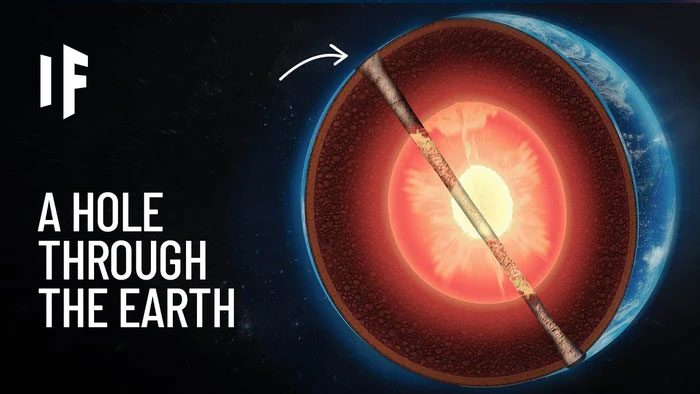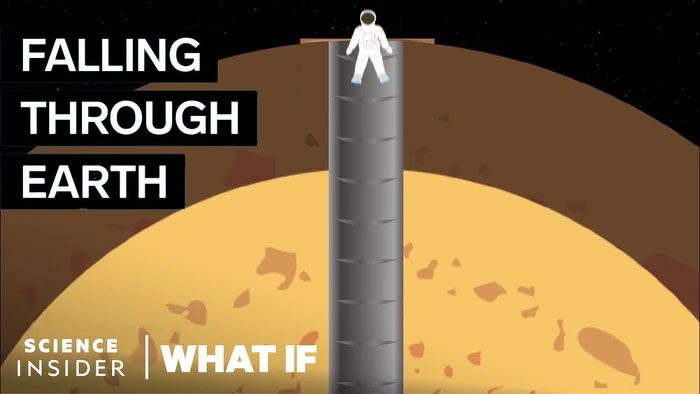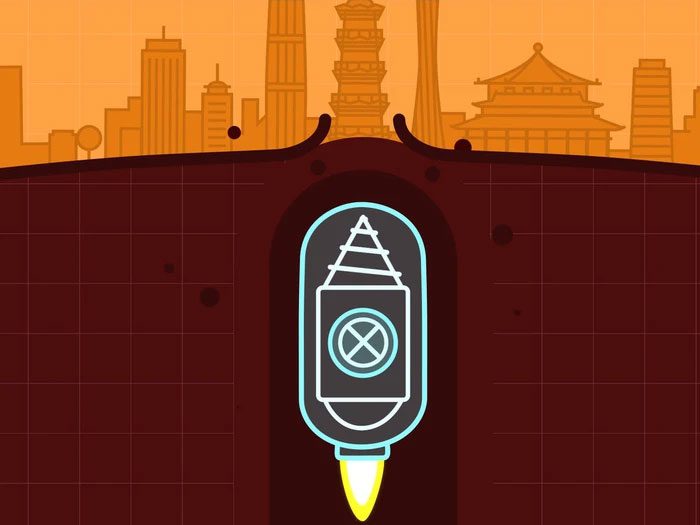Will You Fall into Space or Remain in an Endless Cycle?
The idea of digging a hole through the Earth and jumping into it has captured the imagination of many. This also raises numerous questions about physics, gravity, and the ultimate fate of such an endeavor.
The Journey Begins: Digging Through the Layers of the Earth
The first step in our imaginative journey is a relatively challenging task – digging a hole through the layers of the Earth. As we delve deeper, we encounter various geological formations, starting from the Earth’s crust, which consists of solid rock and soil. The thickness of the crust varies across different regions, ranging from about 5 to 70 km.
As we go deeper, we will reach the mantle, a semi-solid layer composed of hot and viscous rock. The mantle extends approximately 2,900 km and is characterized by high temperatures and immense pressure. Digging will become increasingly difficult due to the harsh conditions encountered in this layer.
Finally, we arrive at the core, which is divided into the outer core and the inner core. The outer core primarily consists of liquid iron and nickel, while the inner core is solid due to extremely high pressures. The core extends about 3,500 km to the center of the Earth.

The core extends about 3,500 km to the center of the Earth.
The Gravity Dilemma: Free Fall to the Center
As we dig deeper into the Earth, gravity becomes an important factor to consider. Gravity is responsible for keeping us anchored to the Earth’s surface and determining our weight. As we move closer to the Earth’s center, gravity gradually decreases due to the increasing distance from the planet’s mass.
Upon reaching the center, gravity will pull us equally from all directions, leading to a weightless state. However, the exact approach to the Earth’s center is impossible due to the extreme heat and pressure at that depth. Therefore, the concept of free fall or floating at the center is purely hypothetical.
Instead, if we continue digging beyond the core, gravity will reverse its pull, gradually slowing us down until we eventually come to a stop at the opposite end of the hole. From there, we would begin to fall back towards the center in a pendulum-like motion.
Facing Challenges: Temperature, Pressure, and Survival
Surviving such a harsh journey presents enormous challenges. Temperatures and pressures significantly increase as we move deeper into the Earth. In the mantle, temperatures can reach thousands of degrees Celsius, enough to melt rock. The heat of the core is even more intense, with temperatures exceeding 5,000 degrees Celsius.
The pressure inside the Earth also rises dramatically. The extreme pressure in the mantle and core would crush any object or living organism attempting to venture beyond the core. Additionally, the lack of breathable air and the presence of toxic gases would make survival impossible.
Furthermore, the distance and time required to dig a hole through the Earth present even more obstacles. With the limitations of technology and human lifespan, achieving such a feat physically is currently beyond our reach.

Surviving such a harsh journey presents enormous challenges.
Theoretical Consequences: Earth’s Rotation, Momentum, and Oscillation
The hypothetical scenario of digging a hole through the Earth and jumping inside raises questions about the Earth’s rotation and its potential consequences on its momentum.
The Earth rotates at approximately 1,670 km/h at the equator. As an object moves away from the center of rotation, the conservation of angular momentum indicates that its rotational speed will increase.
In this scenario, as we move towards the Earth’s core, our movement would slightly slow the planet’s rotation. However, the impact on the Earth’s spin would be negligible due to the planet’s vast size and the minimal effect of one person’s movement.

Digging a hole through the Earth remains a hypothetical scenario with countless challenges and theoretical consequences.
Moreover, the oscillations of the Earth, such as natural oscillations or seismic waves, would also come into play. The disruption caused by digging a hole through the Earth could potentially trigger seismic activity, resulting in earthquakes or localized tremors. However, the extent of these impacts would depend on various factors and would require further scientific investigation.
While the idea of digging a hole through the Earth and jumping into it sounds intriguing, it remains a hypothetical scenario fraught with numerous challenges and theoretical consequences. Extreme temperatures, pressures, and survival difficulties, along with technological limitations and human capabilities, render this endeavor practically impossible.
Furthermore, the rotational movement and momentum of the Earth would be affected to some extent by such an impact. Exploring the theoretical implications of this concept allows us to appreciate the complexity of our planet’s structure and the forces that govern it. Ultimately, the journey to the center of the Earth remains a fascinating thought experiment rather than a feasible reality.





















































